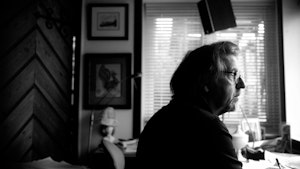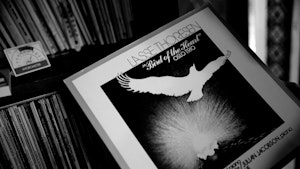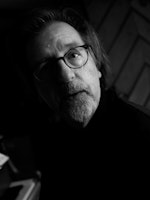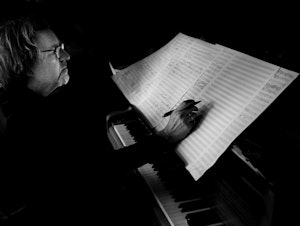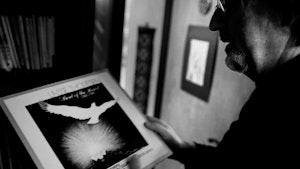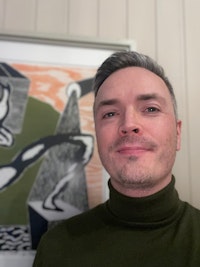“Traditionally, the ear has been a fairly unimportant informant in musicology. What is heard is perceived as more subjective than what is seen, as private and unreliable.”
So says the music researcher, composer and educator Lasse Thoresen. This is where he starts, at any rate. He has based his whole life’s work on the assumption that music is something which is gauged by and through the ear. And because we are poorly equipped with words able to describe what we hear, he has developed terminology to enable us to talk about sounds. The aim is to hone and develop the auditory consciousness, make us into virtuoso listeners who can perceive, analyse and recall music in a better, more insightful way.
It started in 1972, when, as a 23-year-old music student, Lasse Thoresen wanted to try to work out the conundrum that some music is perceived as orderly and some not, he relates, and then to try to understand why some music is perceived as meaningful. It turned into a self-motivating process that might well have ended there and then, had it not been for the researcher in him, who felt that this had to be documented, systematised and related to other research work done in the field.
“So it was no foregone conclusion that this fascination with listening and this problem would finally crystallise into a method that would be possible to pass on to others,” he says, about the method that has been named aural sonology and is described in a 600-page book, Emergent Musical Forms, published last year by the University of Western Ontario in Canada.
Communicating about sound
Lasse Thoresen has been professor of composition at the Norwegian Academy of Music since 1988. As a composer, he has been making his presence felt since the 1970s, and has arrived at an astonishingly powerful mixture of influences from various countries’ folk music and modernism. Captivating, alluring, innovative and challenging music. Yet with a constant desire to communicate with his public.
“The music can be as cleverly constructed as you like, but as long as the intelligence that has gone into that construction is not made accessible in any way by what is being conveyed to the ear, we’re dealing with music which, quite simply, is bound to fail in its communication,” he says.
The project for developing sonology as a listening and analysis method has largely been motivated by the communication problem a lot of new music has, as Lasse Thoresen has experienced, and which he assumes to be connected with the fact that it is “extensively constructed on musical note paper but poorly heard and not interestingly conceptualised”. This in turn – as he sees it – has to do with the ear not having been allowed to be determinative enough, including during the educational process.
“Honing one’s ability to listen and reflect on what is heard turns out to be a great void in all musical education. You can say that aural training does something, but this is an even more fundamental attempt to focus on the aural dimension.”
Tough resistance
The sonology project started to take shape during the 1970s, with the collaboration of the composer Olav Anton Thommessen. This was a period marked by great ideological and aesthetic tensions, and for a number of years aural exploration was viewed as both reactionary and critical of aspects of contemporary music.
“Yes, there was tough resistance to this in the 80s. The Norwegian contemporary music magazine Ballade featured articles by Arnfinn Bø-Rygg and Ståle Wikshåland, who criticised it for being an anti-modernist, rhetorically orientated method that diverted people’s attention from real modernism.”
Some criticism seems to have been justified during the early years of the project, however, because neither Lasse Thoresen nor the community he was part of, as he himself recalls today, had the academic grounding needed to present a new mindset with any conviction.
“I received a certain amount of criticism because I had not adequately explained what we were up to and had not factored it into a theory, which is necessary in order to win institutional acceptance for it.”
